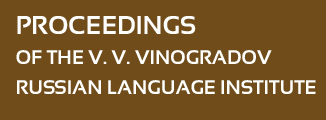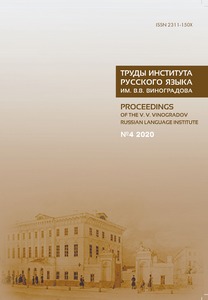DIMINUTIVES IN DIALECT DISCOURSE AND DICTIONARIES
Abstract:
The article examines the functioning of diminutive nouns in various types of oral communication: colloquial speech, vernacular and dialects. The authors, relying on the extensive literature devoted to diminutives, identify what is common to the use of such units in all speech layers, and what specific features each of them has. It is the diff erences that seem to be the most important, because they refl ect the social, cognitive and cultural differences of these areas. General trends: 1. The replacement of neutral nominations with diminutives, a de-diminutivation that has been traced over the centuries and is well described in the material of literary language and dialects 2. The use of diminutives in connection with a specifi c topic of conversation (childhood, human, food, nature, etc.). 3. The use of such nouns in specifi c situations — emotional tension, logical isolation, as well as a “softening”, “polite” request. Linguists paid attention to the frequency of implementation of diminutives in the function of a polite request back in the 19th century. Colloquial speech researchers called this function etiquette-based.
In the opinion of the authors, the use of a large number of diminutives in the speech of speakers of the traditional dialect (ambarushka, voditsa, kvashonka, korovushka, mamonka, etc.) is a manifestation of an archaic view of the world and is associated with relics of magical consciousness. It is derivatives with suffixes of subjective evaluation that are given in magical texts: spells, divination, benevolence, invocations, rituals (especially those related to cattle), which serve as a way of appeasing in protective and producing magic.


